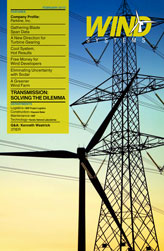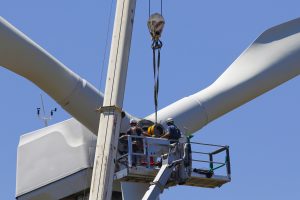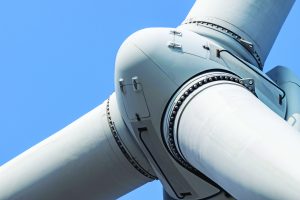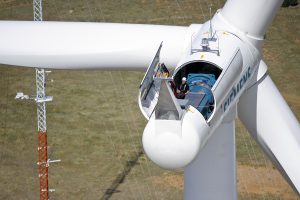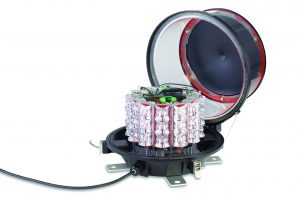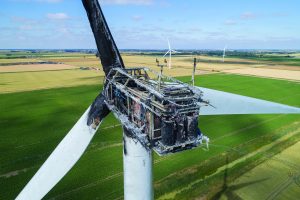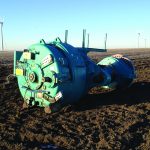Alternative energy generation is becoming an important part of the power generation mix, and it is likely that the size of individual generating units will grow. With 3 MW turbines standing at a height of 295 feet, large bearing systems are required at the heart of the generation machine. This is why SKF has built a test rig to support the validation of new bearing designs and advanced calculation tools in a full-scale bearing.
Along with increasingly greater installed power is the trend for increasingly larger bearings inside the turbines. The most commonly produced SKF main rotor shaft bearing is a special double row tapered roller bearing with an outside diameter of almost 2.4 meters (7.9 feet). This bearing is the largest main rotor bearing for wind turbines manufactured in series production. So far some 1,500 bearings have been produced for one customer.
These turbines are frequently sited in remote geographic locations, which are often difficult to access. This creates an increased demand for reliable performance of both the turbines and the bearings in the equipment. Despite its long and successful history in bearing development, SKF development engineers are faced with the need to answer a basic question from wind power customers: “Are your calculations validated?”
After an extended evaluation of the testing strategy, the decision was taken to develop a full-scale test rig that enables the engineers to investigate these very large bearings. The SKF test center in Schweinfurt, Germany, was selected to design, build, and operate the test rig. The development of the test rig involved a continuous assessment of the intended and the achievable goals within the set time frame. Indeed, the rig was completed within an 18-month time frame. The design and construction of the test rig involved the definition of the test and measurement parameters; the development of the test rig design; finding appropriate suppliers for the rig components; and advanced calculations of the rig components and of the bearings in the loaded conditions.
Large double row tapered roller bearings can now be tested close to the factory instead of in the final application, without all the implications of accessibility and varying operating conditions. The bearings can be tested at speeds up to 60 rpm, which is more than three times the speed used in real applications. The rig enables various lubricants, lubricant distribution, and lubrication conditions to be monitored closely, while the bearing loads can be increased up to twice the load-carrying capacity of the bearing. At the same time the friction performance, elastic deformations, temperatures, and other parameters are evaluated.
The new test rig enables the validation of SKF’s advanced calculation tools for large-size applications in terms of friction performance, lubrication behavior, seal performance, and life calculations. New designs and manufacturing processes can be validated in full scale, and important information on material response can be derived from the tests. SKF’s condition monitoring equipment installed on the rig enables the service condition personnel to hone their skills without traveling to remote locations.
Since the start of the testing campaign, the rig has drawn high-level attention to SKF from both customers and political leaders. The test rig proves SKF’s leadership in this bearing technology, its contribution to the reduction of energy consumption and the support in generating “green” energy. The test rig will be an important steppingstone in entering the even bigger and more powerful wind turbine market of the future.
Ensuring that designs for new large bearing systems for wind turbines meet their designers’ expectations in operation is the job of SKF’s new testing facility in Germany. Built in just 18 months, the test rig allows large bearings to be put through their paces before they start operation in some of the toughest locations and weather conditions in the world. As turbines grow in power and size, SKF sees the new test facility as a major support in the development of new bearing solutions for the wind power market.
















